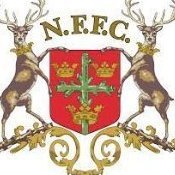Homemade Dog Food.
-
Recently Browsing 0 members
- No registered users viewing this page.
Announcements
-
Topics
-
-
Popular Contributors
-
-
Latest posts...
-
340
Those of you who live on 40k a month
With those minimal overheads you should have change from 20k for savings (assuming sex is nothing/costing nothing) . -
4
High Pressure Shower Head
Is the water pressure also low at other outlets such as kitchen or bathroom sink? If everything is low pressure then you probably need to do the shower head as you mentioned. But, if the pressure on other outlets seem higher, then your shower valve may have a blockage (a problem I had in the past). Normally there are screens installed at the input to the shower valve and they can get plugged up, especially if the condo has done any work on the water lines which can knock loose a bunch of debris (which will collect at the screens if they are installed). The only way (that I know of) to check if you have plugged screens is to turn off the water supply and physically pull the valve off the wall, then turn water back on and see if any debris comes out. Get a Plummer if you are not comfortable removing the valve yourself. Also, did you check with any of the other residents living on your floor to see if they have similar problem? -
2
Air Conditioning Bill Question/Not running at all
That doesn't sound right at all. When were O&A, the house uses ~5 kWh a day, with 2 fridges running, one light on, and no air purifiers. So 30 days would only be 150 kWh = <750 THB, and that's at 5 THB per kWh. Could be a simply mis reading of meter, and will adjust itself next bill, unless meter is digital, then should accurate. If not, I'd think your supplying a bit of juice to common area, or another unit. What's your air purifiers usage rated at, per hour. Why even run them, if not there, especially during rainy season. https://eservice.pea.co.th/EstimateBill/ -
110
How much should you pay a girl if you ask her to stop working?
did you try to get sex from her? -
99
The mainstream media are digging their graves
We don't know what's in the files. However, Trump doesn't want to release them. There must be something in it he doesn't want to be seen, even if it's not incriminating. -
7
Accident Teenager Injured in Pattaya Collision With American Motorcyclist
Fast vehicles generally use the overpass to avoid the traffic lights.
-
-
Popular in The Pub










Recommended Posts
Create an account or sign in to comment
You need to be a member in order to leave a comment
Create an account
Sign up for a new account in our community. It's easy!
Register a new accountSign in
Already have an account? Sign in here.
Sign In Now